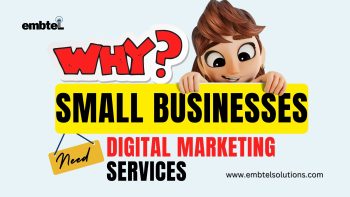As Steve Jobs once said, ” Design isn’t just what it appears as it feels like. The plan is the way it works. “performance along with with with the serviceability, not the visual layout, determine the failure or success of a web site. The customer of the web page is the sole person who’s trying to find advice regarding a product or a service.
With a click of a mouse that the visitor determines, the user-centric layout is the requirement for achievement and profit-oriented internet design. We’ll concentrate on the main elements of web design, lateral thinking, and effect-oriented approaches for successful web design that could cause more complicated decisions, consequently, simplifying the process of understanding the specified information.
Before viewing the guidelines for successful web design, it’s essential to understand what users believe if they interact with a web site. The behavior of the consumer, if he or she disagrees with a website, is somewhat like a customer interacting with a shop. Visitors peek at every web page, text, and graphics. They narrow down to clickable hyperlinks that grab their pursuits. Most consumers, when they see a web page, they are searching for particular information, service, or product.
Users like Quality:
When a web page offers quality articles, then it’s compromised with ads and layout of their web page. An individual ought to keep in mind that a mixture of great design and excellent content, is required to drive traffic on the page.
Most consumers Scan The Web page:
When an individual visits a web page that they scan the page for the content which matches their requirements.
When the material on the page Isn’t properly ordered and should The visitor isn’t able to acquire the essential information within the initial three seconds. Then the odds of consumers departing the page increases. Users Do Not Make The Best Alternatives: Web page traffic does not go page by page to Look for The essential info. Instead, they scan the web page and the connection, which Suits their need, and they leap to it.
Intuitive Feeling:
Many users scan the web page rather than reading line by line. According to the data architect Steve Krug, it’s principally because the users do not care. “When we find something which works, we adhere to it. It does not matter to us if we know how things operate, so long as we could utilize them. If your crowd behaves as if you are designing an intricate layout, then produce a fantastic layout that makes users believe.”
Now, having noticed the consumer’s behavior, We will checklist the internet designing fundamentals.
Don’t Make Users Overthink:
According to Krug’s first law of usability, the web page should be self-explanatory; it should contain answers to most of the questions which users can get after going through the web page. If the navigation and website architecture is design properly, the user will find it challenging to comprehend how the system works. A well thought and structured layout, along with clear and concise quality content, direct the user towards availing the services or making a purchase. Thus, a well-planned structure reduces the mental load. Once this achieved, it will be easy for the user to navigate through the website.
Use Minimum Fill-in Forms:
In every project, which is design to cater to the specific needs of the user, try to keep users’ requirements minimal. First-time visitors will like it if they don’t have to fill in long forms to try out your service. Remove all barriers; a user registration using a long fill in the way is enough to cut down on the incoming traffic.
Divert user’s attention towards your USP:
A website contains both static and dynamic content, some aspects of the user interface are more attractive than others. Engaging content, images, and videos are used to attract customers towards your USP (Unique Selling Proposition).
Strive for Attractive Content-Rich Interface: Modern web designers focus more on the visually appealing interface, and they neglect the architecture of the web page and content. The right mix of design, layout, and content will drive more quality traffic to the web page.
Strive for Simplicity and Effective Writing:
The content on the web page should be clear, concise, and structured adequately as it helps the user to find the required information easily.
Innovate But Not Distract:
Impressive web design uses innovation and creativity. Use white spaces or negative spaces as per the requirement. White space is the area of the page that is empty, used primarily between the images and videos.
Aesthetically Appealing:
Target As Per The Niche: Every industry or segment caters to specifically target customers based on factors like age, geography, and gender. The design of the web page explicitly designed to target a selected niche.
Build Online Credibility and Trust:
Nowadays, everybody is present on social platforms, users, and business enterprises both. Use your web page to build trust and credibility on social platforms. A testimonial from the existing clients is a great way to do this.
Optimized Web Page:
The web page should be optimized to load faster without compromising on the quality factor.
Responsive Web Design:
Due to an increase in handheld devices and data penetration. Mobile devices are the primary source of traffic on the website. Web pages should be responsive to load in any device irrespective of the screen size.
Thus, a web page should be designed, keeping in mind the user and business needs. Use these web design principles to get an aesthetically appealing and result-oriented web page.
Like Our Facebook Page and Follow Instagram for more updates.
Post You May Also Like
7 Huge Benefits of Digital Marketing for Businesses
5 Actions of a Successful Digital Marketing Strategy
5 Competitive Analysis Frameworks Described with Visuals
TOP 7 DIGITAL MARKETING TRENDS FOR 2020




